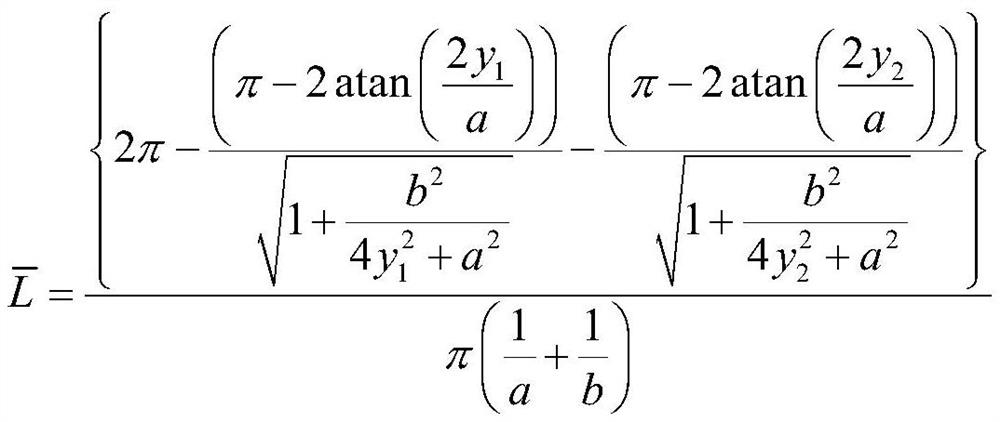Method for evaluating noise reduction effect of railway totally-enclosed sound barrier
An evaluation method and sound barrier technology, applied in special data processing applications, design optimization/simulation, etc., can solve problems such as inability to form a diffuse sound field, low operating speed, and inability to use
- Summary
- Abstract
- Description
- Claims
- Application Information
AI Technical Summary
Problems solved by technology
Method used
Image
Examples
Embodiment 1
[0070] Embodiment 1 (at low speed, when the wheel-rail noise source is the main source)
[0071] A method for evaluating the noise reduction effect of a fully enclosed railway sound barrier, the steps of which are as follows:
[0072] (1) Determination of the reverberation sound inside the fully enclosed sound barrier
[0073] 1) Calculation of the mean free path inside the fully enclosed sound barrier:
[0074]
[0075] Where: y 1 、y 2 - the distance from both ends of the sound barrier to the sound receiving point (along the direction of the line);
[0076] a, b——The section width and height of the fully enclosed sound barrier.
[0077] 2) Calculation of average sound energy density of reverberation sound:
[0078]
[0079] In the formula: W——the sound power of the line sound source per unit length;
[0080] L - EMU length;
[0081] V——The internal volume of the fully enclosed sound barrier in the train passing area V=LS, where S is the cross-sectional area of th...
PUM
 Login to View More
Login to View More Abstract
Description
Claims
Application Information
 Login to View More
Login to View More - R&D
- Intellectual Property
- Life Sciences
- Materials
- Tech Scout
- Unparalleled Data Quality
- Higher Quality Content
- 60% Fewer Hallucinations
Browse by: Latest US Patents, China's latest patents, Technical Efficacy Thesaurus, Application Domain, Technology Topic, Popular Technical Reports.
© 2025 PatSnap. All rights reserved.Legal|Privacy policy|Modern Slavery Act Transparency Statement|Sitemap|About US| Contact US: help@patsnap.com



